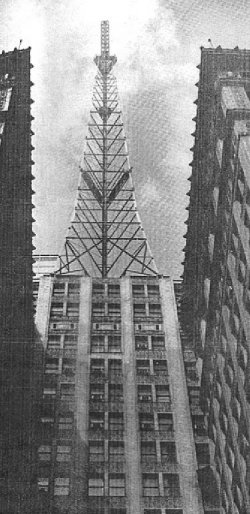Radio Articles
KMOX-FM – Always An Afterthought
When KMOX ownership announced plans for a new experimental FM station in 1941, international circumstances prevented the project from coming to life. When the station finally did come back to life two decades later, no one seemed to know what to do with it.
While FM broadcasting in 1941 was in an experimental stage, the bombing of Pearl Harbor on Dec. 7 of that year put a halt to technological broadcast development, and although several FM stations signed on in St. Louis following the war, most “went dark” within a couple years.

On Feb. 12, 1962, KMOX-FM signed on. The broadcast day initially ran from 6 a.m. until midnight, and it was a 100 percent simulcast of the KMOX-AM programming. It was this simulcasting practice that had caused the failure of those other FM stations in the late ‘40s and early ‘50s. Listeners, it seems, saw no reason to buy a new radio to listen to programs they could hear on the AM radios they already owned.
Then, in 1967, the Federal Communications Commission ruled that 50 percent of FM programming on co-owned stations had to be original rather than simulcast. KMOX-FM began providing its listeners with what was called “The Young Sound,” a format consisting of middle-of-the-road music with selected current hits mixed in. These music tapes were provided by CBS in New York. The fact that the music was in stereo was a big selling point and gave reason to listeners who had considered buying high quality FM receivers.
This evolved into “The Sound of the ‘70s.” A Globe-Democrat article on April 11, 1970, quoted station general manager Robert Hyland, “KMOX-FM stereo…avoids the hard rock to concentrate on adult pop – the tops in popular music for the 20-40 age group.” In the Post-Dispatch in November of that year, Hyland wrote: “To keep KMOX-FM stereo on top of things, we select new music each day. Each week we review the music we are broadcasting and add at least eight new singles and ten new albums to the station’s repertoire.
“Our future plans include specials devoted exclusively to various types and categories of music, as well as programs built entirely around individual artists.” Hyland didn’t mention that his FM station would also serve as a dumping ground for sports broadcasts. In those days, KMOX-AM had play-by-play rights to every major sports team in the city. When there were two teams scheduled to play at the same time due to the overlap of sports seasons, one team would have its broadcast shifted to the FM station.

Most of the musical programming decisions came from Bob Osborne, a KMOX employee who wore many hats. He was also heard as a deejay on KMOX-FM and was the voice on many of the station imaging spots. Many other people were deejays on the station during those two decades, and their paths to the seventh floor studios at 1 Memorial Drive weren’t always pleasant. There were times when GM Hyland would “farm out” talent from KMOX. Some saw it as a punishment – radio’s equivalent of the proverbial trip to Siberia. But there were others who used their announcing jobs there to supplement their free-lance voiceover income.
Live deejay shows were seldom heard on KMOX-FM. Instead, taped voice tracks were inserted into the station’s huge automation system in the hope listeners might think they were hearing someone live. The black monster filled an entire room and contained all sorts of electronic bells and whistles. There was even a large tape cartridge that contained a time signature for every minute of the day (“It’s 12:15 at KMOX-FM.”), with everything designed to make the station sound live. But it cost CBS less to pay people to record voice tracks because each jock could turn out several shows in a short time, and they were only paid for the time spent recording. It didn’t seem to bother station management that there were occasional technical miscues, causing listeners to hear the announcers introducing a song that had been heard ten minutes before.
The end of KMOX-FM began in August of 1981 when CBS began the national experiment known as “Hit Radio.” The station’s playlist began its transformation with more current pop hits being added, and by the end of the year, the KMOX-FM call letters were dropped, replaced by KHTR.
(Reprinted with permission of the St. Louis Journalism Review. Originally published 02/08)
